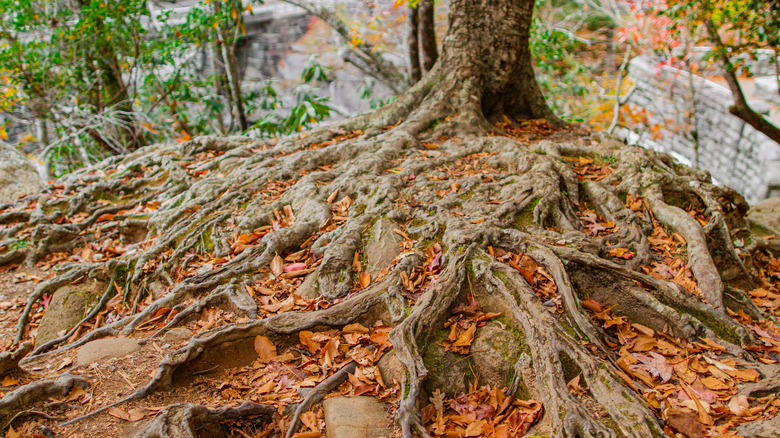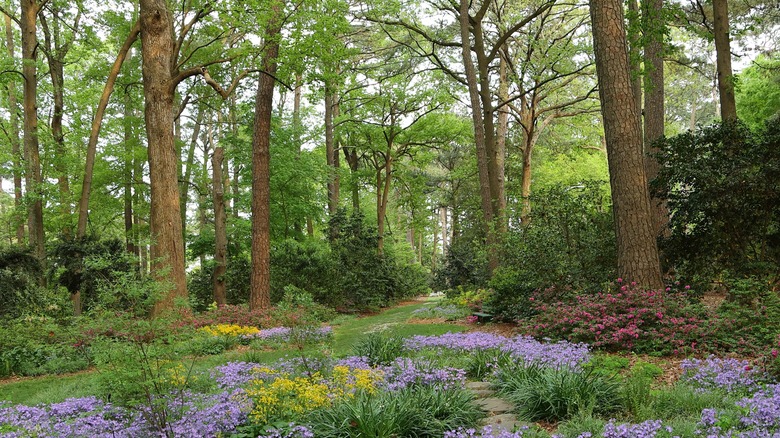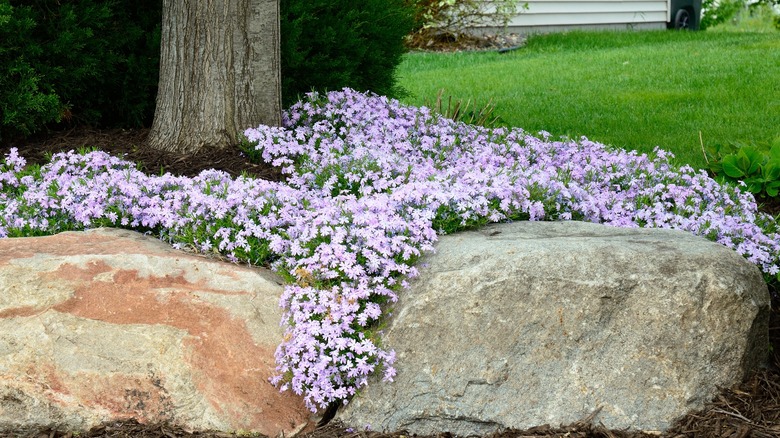The Perfect Flowering Coverage For Your Tree's Above Ground Roots
The finger-like root system that juts out from the soil around your trees is an important component of the plant's health. Though some people believe the roots should be covered, too much dirt and mulch can suffocate the vital root system, putting your tree at risk. If you don't want to see the roots, choose a flowering plant that does well in small amounts of soil to get the best of both worlds. A solid option is creeping phlox.
Creeping phlox is available in a multitude of colors and simply spreads over the top of the soil, needing only a few inches of dirt to help sustain its growth. The plant comes in beautifully lush and creates a ground cover-like result that is nothing short of beautiful. It also works to hide the root system of the tree above, creating a great pairing of the two plants that can look just as stunning as a perfectly mounded mulch base at the tree.
Before you plant anything around the ground roots of a tree, though, it's important to understand its purpose and what those roots need. You also want to ensure that anything you plant above the roots will allow for ample air circulation and easy expansion of the roots. That's why small plugs of creeping phlox work so well to give you the visual you want without taxing the tree.
The function of those close-to-the-top roots
You may know that tree roots creeping slowly away from the trunk in their search for water and nutrients. Though most of the tree's root system is deep underground, many other branches are just under or on top of the soil, allowing the tree to pull in the oxygen it needs. The above-ground roots are typically present when there's less oxygen in the soil itself, often due to the soil being very compact or limited near the tree. The roots grow upward, then reach above the dirt as a way to get access to the air it needs.
Over time, these surface roots are likely to become more pronounced. While one or two small roots above the dirt may not be bothersome, when a large, growing mound of them is evident, it can detract from the look you are trying to create with the rest of your landscaping. Note though, that if the roots are causing foundation issues, you shouldn't just remove the roots. Consider removing the whole tree.
These roots may be bothersome in the way they look, though they are not a sign of disease or stress to the tree itself. They can create a tripping hazard and may make the tree look old and damaged. If that is the case, there are a few things you can do to support the tree and root system while helping its aesthetics.
Why creeping phlox and other ground cover can help
You can cover some of the roots with a loose layer of mulch, keeping it at no more than a couple of inches on top of the roots themselves. Then, with that small amount of dirt and mulch present, add the creeping phlox or another type of ground cover that doesn't require much soil and does well in the shade.
The ground cover will eventually spread over the top of the root system without penetrating deeply into the soil. More so, because creeping phlox is a very open and airy plant itself, it can encourage good airflow throughout the system. Only plant a few ground plugs in the area, and allow them to spread naturally. Overplanting this region will create too much matting, causing the suffocation you are trying to avoid.
Avoid planting anything that requires you to dig significantly in the soil since it may damage the root system. Instead, look for plants that are easily plugged into the ground to create the protection you need. You can purchase creeping phlox ground plugs in the spring months and plant them according to the directions provided by the grower. The good news is these are fast-growing plants that can give your tree a brand-new, impressively beautiful look without damaging the roots.


